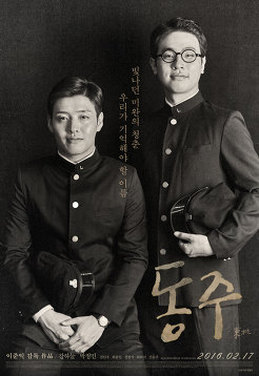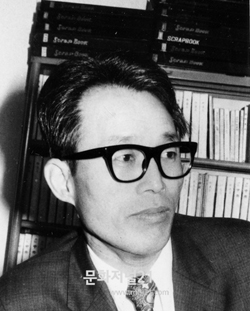I had the pleasure of learning the name
Yun Dong-Ju (윤동주) last week. A
movie is now out about him and I had the good fortune to see it (the less fortunate part was how little I understood). Yun Dong-Ju is, it seems, one of the most beloved Korean poets of the 20th century. He also has a romantic and “political” (one might say) cachet to the present-day Korean mind because of his early death in a Japanese prison in February 1945 at age 27.
I have decided to translate one of Yun Dong-Ju’s poems called Self-Portrait, though I might prefer to translate the title also as Portrait of the Artist. It was written in 1939 and was included by the author in a collection he published with limited circulation in 1941. The collection was republished in 1948 following the author’s death and the deceased Yun Dong-Ju became a kind of poet folk hero, it seems.
The below is my own translation. I increasingly find Korean poetry beautiful for its disciplined use of language and layers of implied meanings, but this also makes it a real challenge to translate smoothly.
Self Portrait has an air of mystery to it. Two characters. Thick symbolism. In reading it, many questions come up. This is a self-portrait, is it? Which character is the author? Both? I suppose that is up to us to decide…
Self-Portrait
Yun Dongju [1917-1945] / Poet
[Translated by Me, April 2016]
On my solitary way down from a rocky outcropping,
I seek out a secluded well for a little peek inside.
Inside the well: A bright moon, drifting clouds,
a spread-out sky. A blue breeze blows. It is autumn.
There is also this strapping young lad.
For reasons unclear to me, I feel that I hate this lad.
I turn away to leave and proceed on my way.
Presently, I begin to take pity on the lad.
I go back for another look.
There he is again, still there, just as before.
Again I feel that I hate this lad, and again I take my leave.
Walking away, I come to realize something. I yearn for the lad.
Inside the well: A bright moon, drifting clouds,
a spread-out sky. A blue breeze blows. It is autumn.
As from the recesses of fond memory, there is, also, this lad.
Original Korean:
자화상
윤동주 [1917-1945] / 시인
산모퉁이를 돌아 논가 외딴 우물을
홀로 찾아가선 가만히 들여다봅니다.
우물 속에는 달이 밝고 구름이 흐르고
하늘이 펼치고 파아란 바람이 불고
가을이 있습니다.
그리고 한 사나이가 있습니다.
어쩐지 그 사나이가 미워져 돌아갑니다.
돌아가다 생각하니 그 사나이가 가엾어집니다.
도로 가 들여다보니 사나이는 그대로 있습니다.
다시 그 사나이가 미워져 돌아갑니다.
돌아가다 생각하니 그 사나이가 그리워집니다.
우물 속에는 달이 밝고 구름이 흐르고
하늘이 펼치고 파아란 바람이 불고
가을이 있고 추억처럼 사나이가 있습니다.
|

Poster for “Dong-Ju” (2016). Yun Dong-Ju is on the left, without glasses. The actor bears a strong resemblance to the real person.
|


